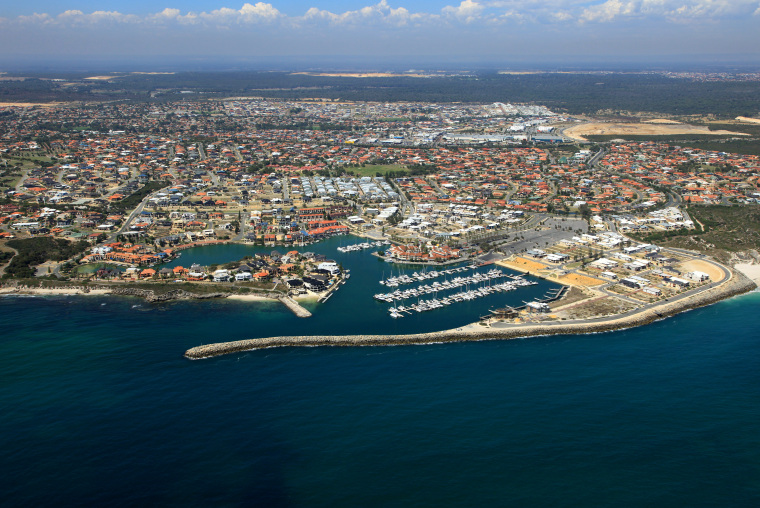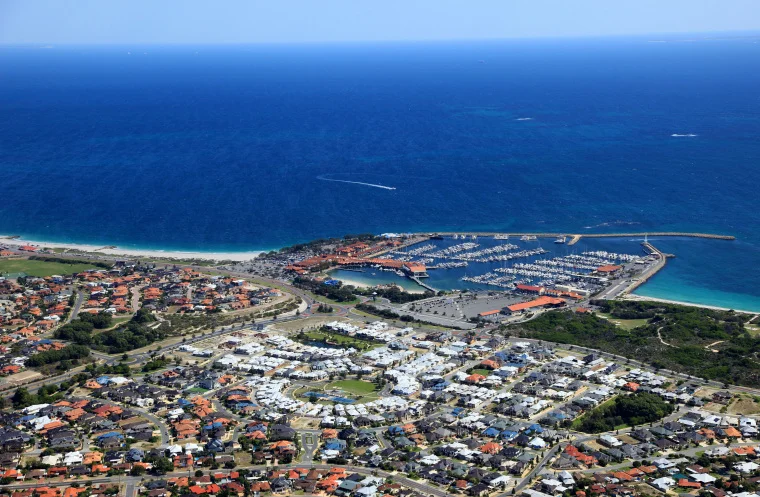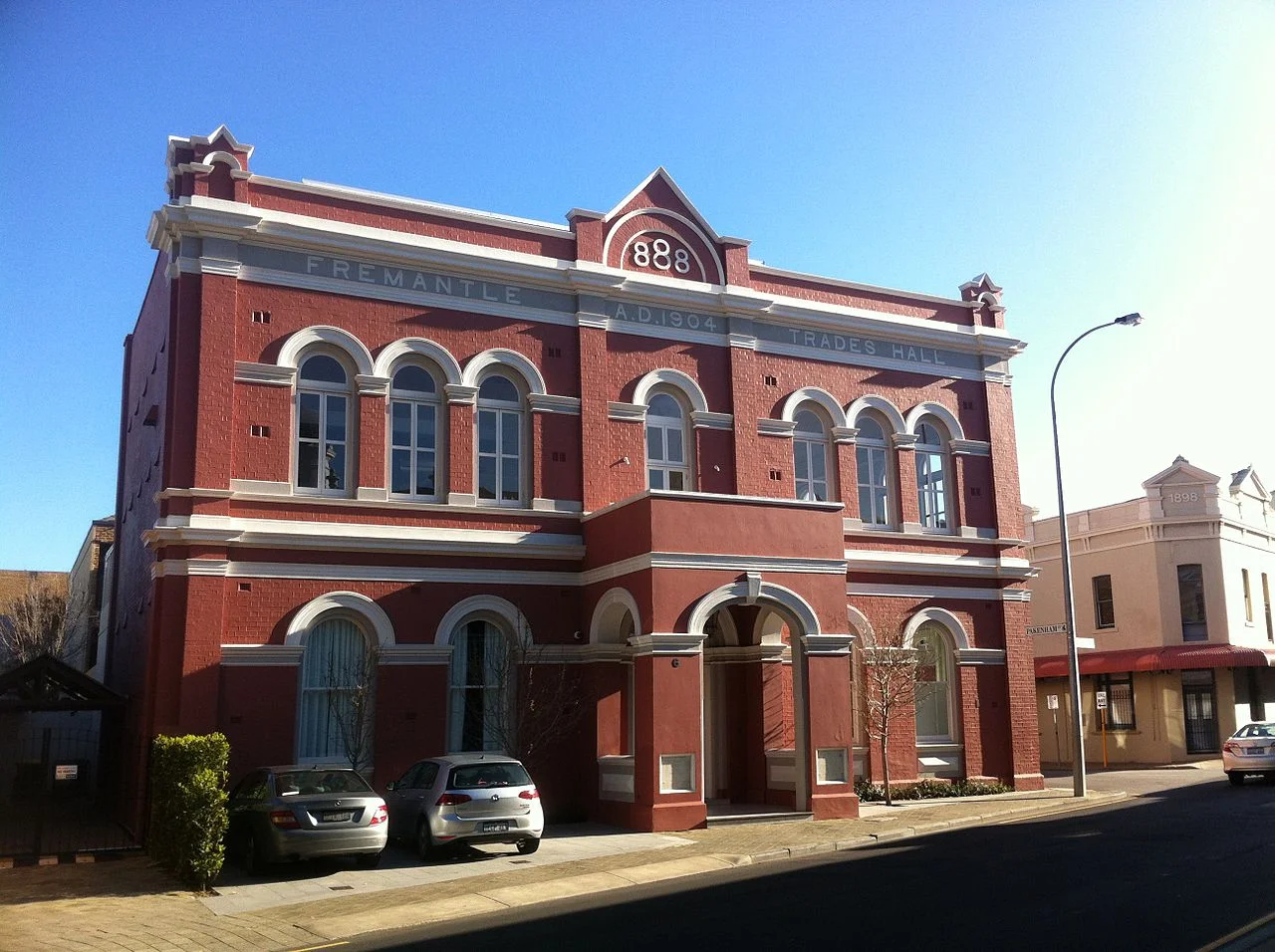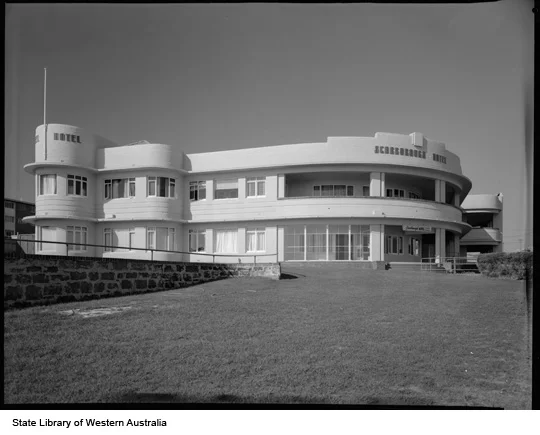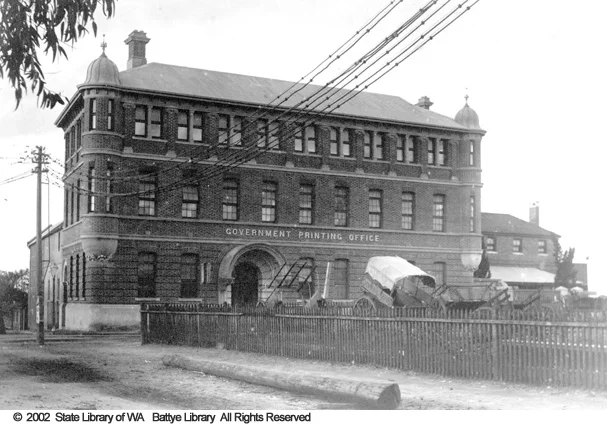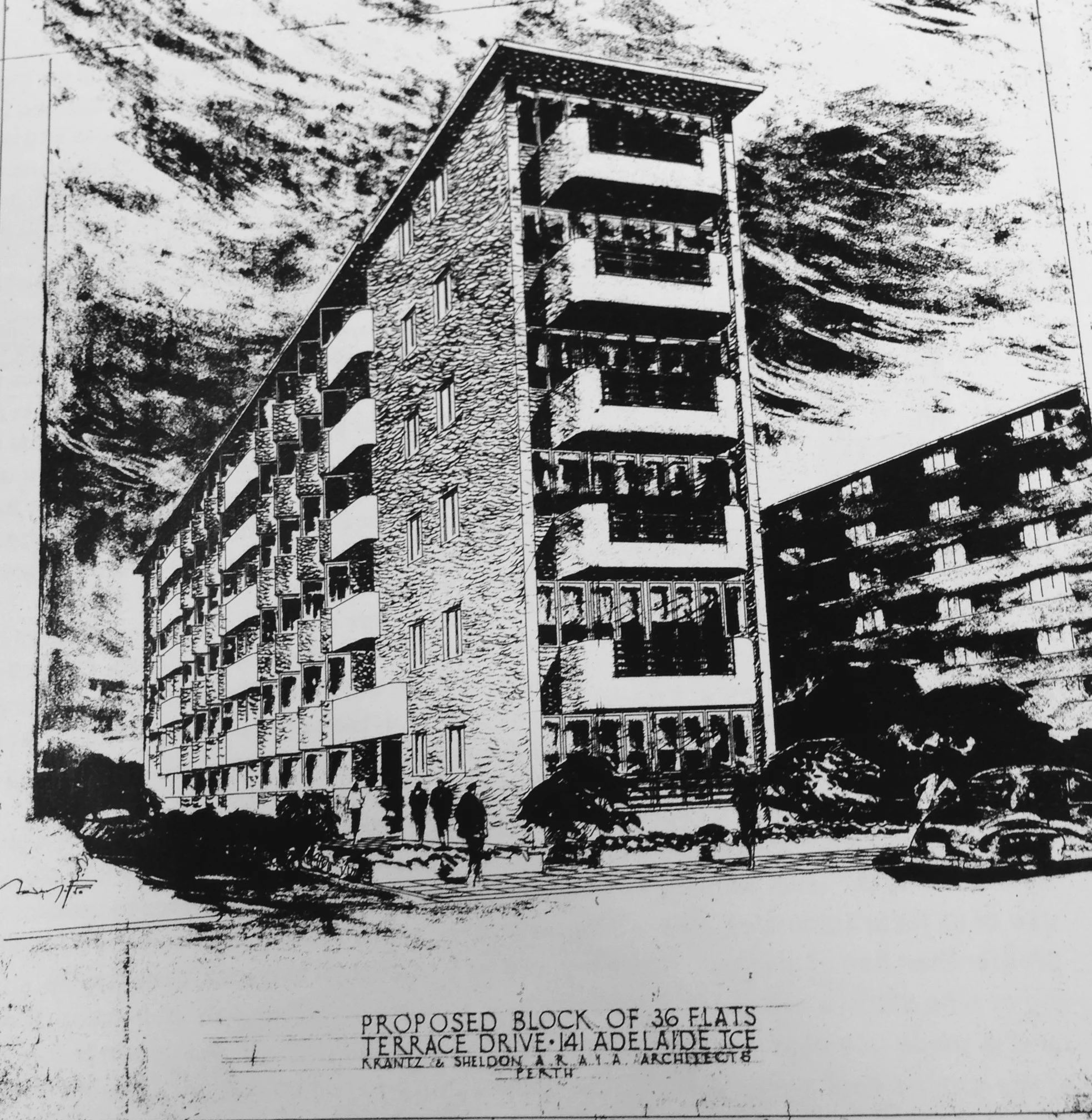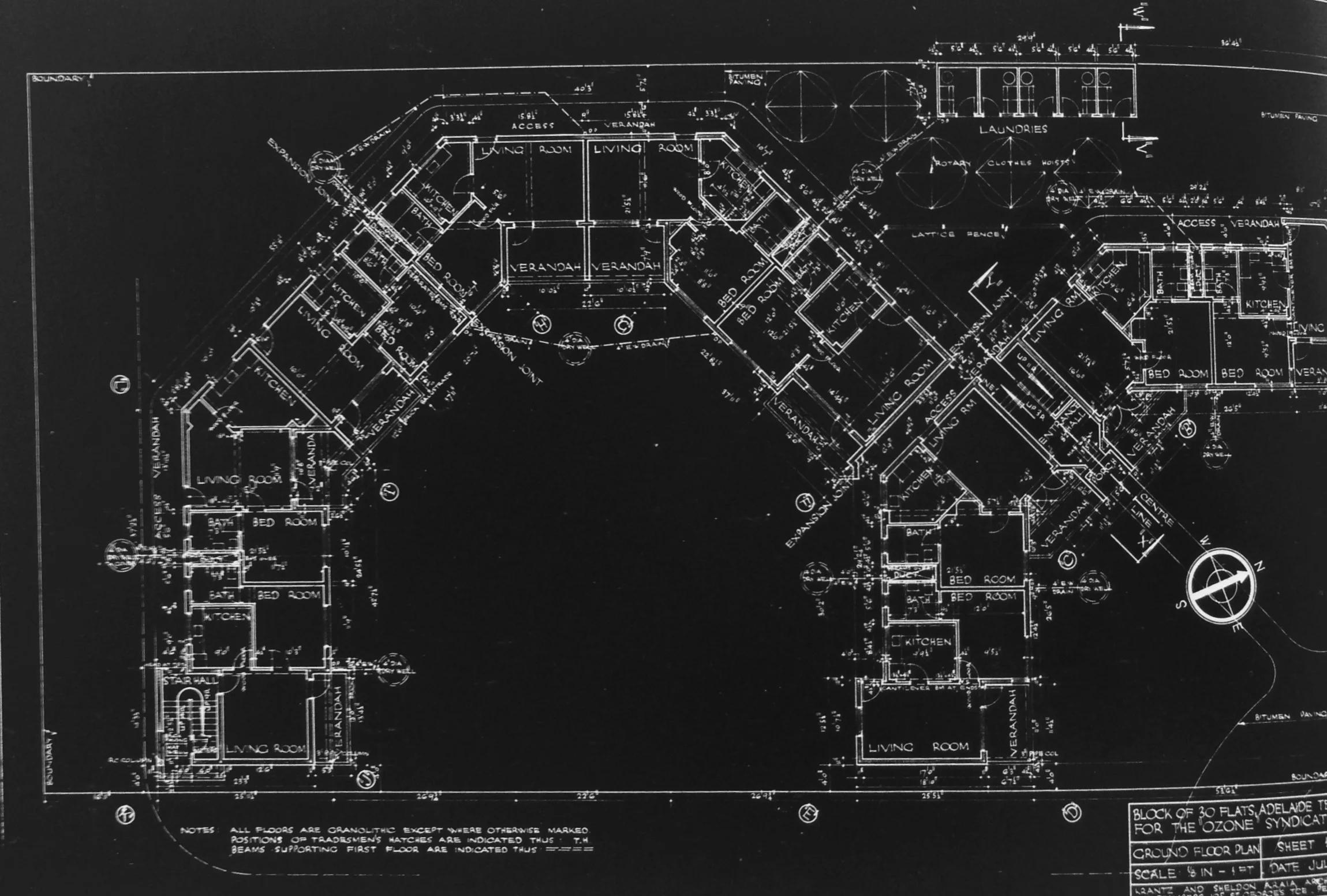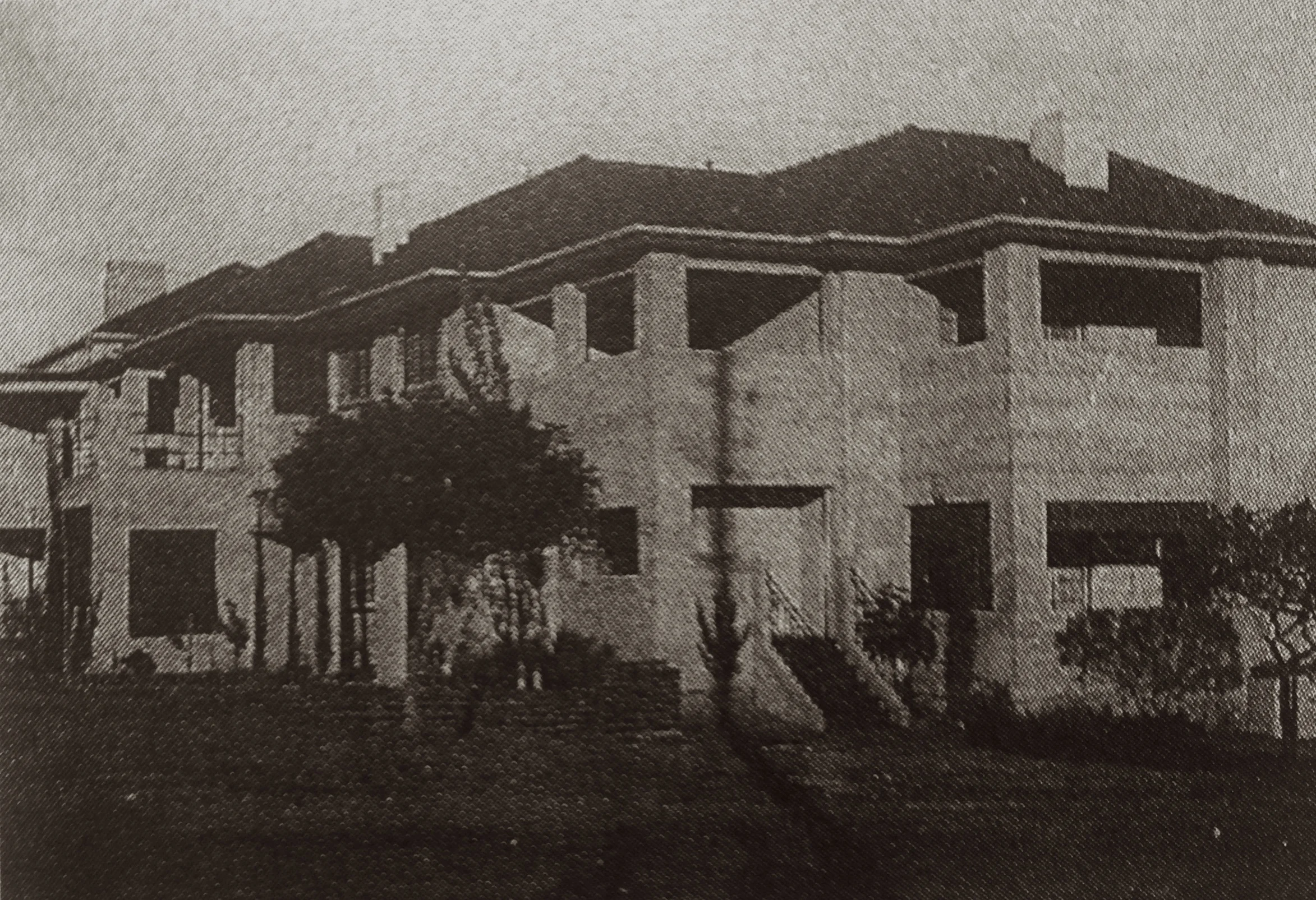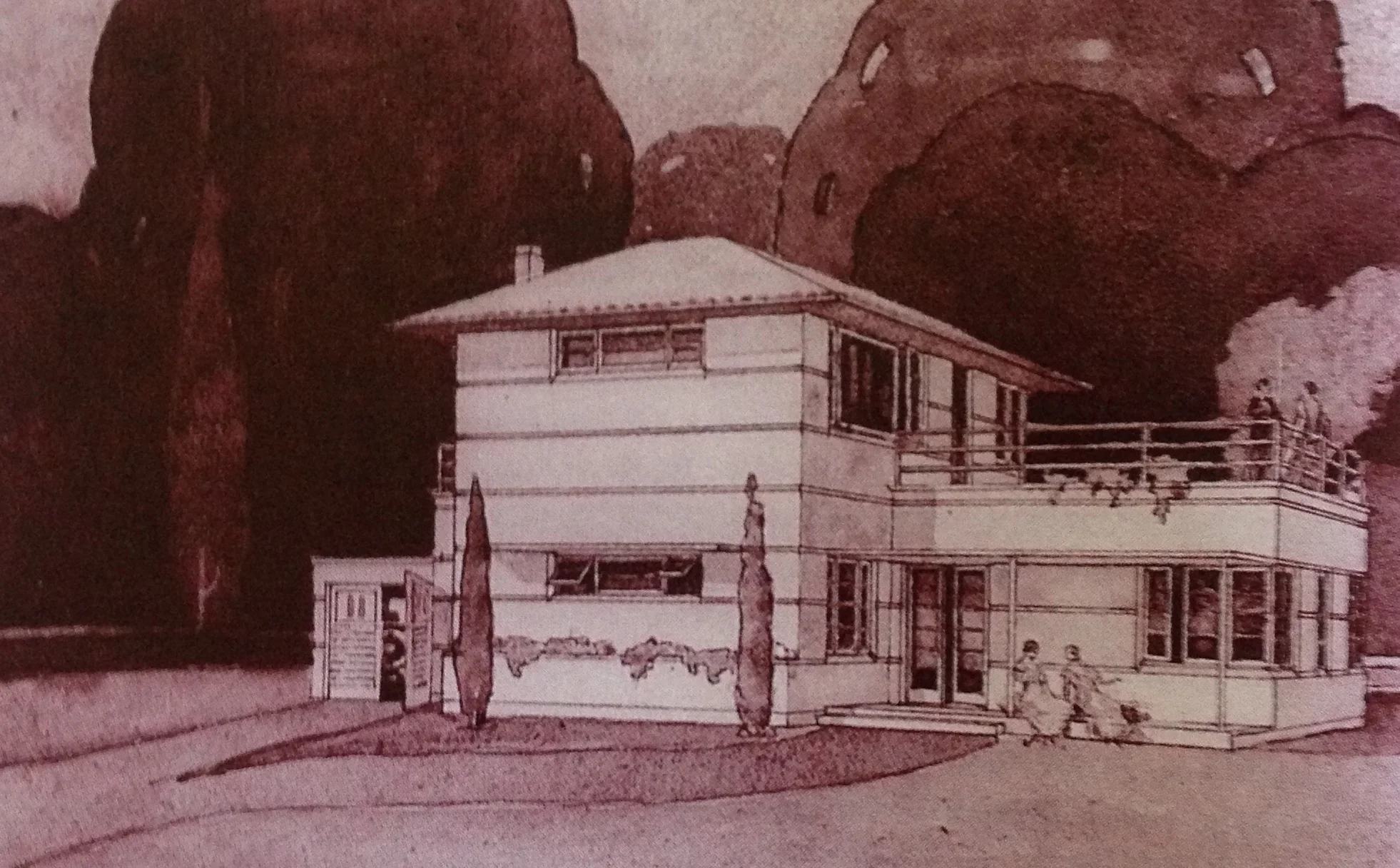Gen Y House
image source:
https://media3.architecturemedia.net/site_media/media/cache/57/42/5742aa37abb8bf14d24a3b48784ba985.jpg
Causeway Gardens
“The more work I got, the cheaper I could build, because I could use standardisation and mass production and the more I built, the cheaper they got, and cheaper they got, the more I built, and this was a sort of vicious circle in reverse.” [1]
From the early years of the Swan River Colony, wetlands were used as convenient repositories for rubbish dumping.
In later years, municipal authorities gazetted wetlands as rubbish tip sites, and metropolitan rubbish was dumped into the wetlands until they were full. They were then flattened and used as sports grounds, parks and ovals.
Lake Poulett was drained in 1872, and after serving as the town rubbish dump and then Chinese gardens, was partly used for the formation of Birdwood Square in 1914 (Seddon 1972).
By 1901 the clay pits east of Plain Street had been transformed into Queens Gardens but directly across the road was the East Perth rubbish tip filled with water, overflowing with rubbish and surrounded by mud and decay, it was a standing disgrace. In 1904 the tip was covered with sand and transformed into sports playing fields which are now the Western Australian Cricket Association grounds (WACA) (Stannage 1979).
The Eastside Gardens in East Perth is the the first building in Australia to be constructed entirely from slipformed concrete. To achieve greater heights beyond the scope of brick construction, architects Krantz and Sheldon, commissioned by the Bond Corporation. developed a construction technique that was superior in the speed of construction which significantly saved costs. This new construction technique allowed Krantz and Sheldon to benefit in the economies of mass production.[2] For the first time in Perth, a building could be constructed at a high output of efficiency and speed. In this regard, bulk orders of building fittings and fixtures such as doors, windows, stoves, furnishings, locks and the like, were ordered at a high turnover and therefore at a cheaper rate. Krantz could design and construct buildings cheaper and quicker than anyone else in Perth, and was based on the ability for standardization in their buildings. Their desire to continue building flats at an ever increasing rate through methods of rationalized efficiency became the norm, taking this building as one of the first to what we see today in contemporary apartments.
Notes:
[1] Jane Fleming, “Krantz Interview”, 1981.
[2] Crist, Graham, “Krantz and Sheldon: Modernity and urbanism. Flats in Perth 1930-1980”, (Dissertation, University of Western Australia, 1990), 62.
Mount Street Flats
This example of apartment living bears a marker of change to domestic living that was at the time, just outside the CBD. Containing a combination of bachelor flats and two bedroom flats, this building comes from a direct influence from the European Modernist tradition by Robert Sheldon, soon to be partner of Harold Krantz. Sheldon, an immigrant himself brought with him a European experience of Modern urbanism, with a sophistication approach to construction that had a notable impact of shaping Perth city and its surrounding suburbs to come.
Former Police Station & Residence & Stables
The first floor shingles originally extended over the roof which incorporated a dormer window. A vernacular revival design directly imported from the southern English counties and a work of which Poole was quite proud. The vernacular revival movement later found native Australian inspiration. The predecessors of this house are today regularly advertised in “Country Life” magazine as “delightful period” houses.
Notes:
[1] Molyneux, Ian, Looking Around Perth, A guide to the Architecture of Perth and Surrounding Suburbs, Royal Australian Institute of Architects, WA, 1981, Wescolour Press, East Fremantle, WA. 23.
Tyrell Street Walkups
photo credit: State Library of Western Australia
Walkups II
Further along Stirling highway, at numbers 72 and 74 are more domestically scaled maisonettes. The seemingly single masisonette has been carefully planned into four separate dwellings to each floor. Without conflicting with the planning restrictions, plot ratios or height restrictions, Krantz had allowed for a higher density of living within the predominate detracted cottage dwelling in the area.
Jubilee Street Townhouses
Over two decades after his first Mansard housing development, Jeffrey Howett adapts his hidden storey again here on Jubilee Street, (1975) now with black painted tiles. On this note, Michael Markham pointed out an in interesting dichotomy with Howett’s progressive adaption to the finish of the Mansard tiles. Where Onslow Street exhibited painted white tiles, a gaze towards Modernism’s purity, here, we discover the inverse effect, black. To mediate such an effect emerges into Postmodernism’s ideology.[1] Modernist discourse aside, these Mansard (and rather peculiar) projects conceived by Howlett, succeed in challenging both the relationship with scale and density in town housing and the notion behind, specifically, the typical mansard townhouse. By making ambiguous statements in the proportioning of the roof component, in turn, compositionally balances on the edge to be an either a sloping wall or a roof. What is also remarkable is that Howlett’s mansard buildings partake in a two-decade housing experiment concerned with the typology of housing,[2] and has led to many other imitators of its kind.
Another note to mention in Howlett’s mansard townhouses is in his preference to resist a townhouse to be a detached dwelling. Instead, he has favored the quasi-stretched manor type. As a consequence, as noted by Markham through his windscreen driving past these projects, they are hard to see that they are indeed broken internally with separate dwellings inside their extruded linear volume. Conveying a similar type to the terrace or row house these rather old Mansard projects are therefore quite unique for Perth’s preference for the detached dwelling.
Notes:
[1] Michael Markham, “John Glenn’s Skyline,” Jeffery Howlett, Architectural Projects, Lawrence Wilson Gallery, 1992.
[1] Markham, “John Glenn’s Skyline,” 1992.
Terrace Road Walkups
The legendary architectural practice of Krantz and Sheldon has more than anyone else in Perth, has pushed the relevance and validity of flats as a modern housing type for urban life. Nearly all of these developments were procured from private interest and funded with syndicates with Krantz and Sheldon being both the client and developer.
Krantz and Sheldon’s walk up flats along Terrace Road in Perth bears no exemption here and demonstrate good examples of the walk up flat typology. Challenging the the city’s by-laws at the time, these walkup flats along Terrace Road were developed to the maximized allowable extent. Unlike developers today, Krantz and Sheldon sourced and purchased available land close to the city, found clients that were willing to be onboard in funding their developments by charging them the architectural fees and construction costs. A syndicate of a few people could get together, pool their funds and build something on the recently purchased land. In this regard, Krantz and Sheldon were, by todays standards, all at once the architect, developer, builder and client with the help of the syndicate. What’s more, their sustained ability to keep a high turnover included Krantz and Sheldon’s interest in investment into their own projects. By taking a couple units themselves to be used for investments for the following development enabled Krantz and Sheldon to continue this methodology. Not seeing any economical return in developing in the greater suburbs, Krantz and Sheldon’s success during this period were in their interest on the housing demand in the city. The major advantage being that they were able to achieve a higher density of housing units and therefore achieved a higher economical return.
Whist these apartments are by todays standards based may be conceived to be small and cheap in their aesthetic appearance, were constructed economically to a sophisticated level of practicality. By working within tight budgets whist focusing on a refined architectural detail to reduce the risk of building maintenance and roof leaks, these walk-ups by Krantz and Sheldon should be still merited for their endurance and sustainability based of evidence of good design in the city.
Knutsford Precinct
The Knutsford Precinct is a four-stage multi-residential development to a former industrial area. The formal industrial area still bears its presence with a mixed use of industrial yards, fabrication shops, stores, and lunch bars, and an old lime stone quarry, in an area of low-rise worker’s cottages.
The entrepreneurial nature of this project is unlike any other contemporary developer-led residential projects. Here, the Kuntsford precinct arose from a design-led bidding involving a syndicate developer-client that manifest in a recognition in its residential architectural achievements.
What is striking is how such a medium-density scale residential development employs its distinctive spatiality. The Kuntsford Precinct, (in its final stage of completion) speculates on a village typology within a Mediterranean-medieval setting in its scale, intimacy and climatic responsiveness, (by threading native landscaping upon the existing dune) resembles a cohesive whole. This is achieved in its spatial pragmatism grounded in a local sense of rustic modernist formality.
A mixture of private and shared outdoor spaces permits a sense of community, while an example of its successful pragmatic outcomes is demonstrated in the narrowing of laneway that runs through the North-South axis of the site. By challenging the States planning right-of-way requirements, this laneway has resulted in an intimate engagement with the first level balconies to encroach into the right of way, constituting a village-like a proportion of scale. What emerges here is a safe and imaginative play area for children of the area.
For the future of densifying Perth’s domestic living, The Kuntsford Precinct advances the model that can also assist as a case study for future developer-led in Perth suburbs.
For more information see review “Knutsford Stage 1” by Simon Pendal in Architecture Australia May/June 2017 vol.106 no.3.
image source:
https://images.thewest.com.au/publication/YA-300110/5754fa707214c_cs_jr_2016060508_knutsfordstage1_spaceagency.etal_robertfrith_0_1bl9uje-1bl9ujg.jpg
Post Office & Residence
Originally built with a shingle roof with simulated Tudor half-timbered first floor construction over a stone ground floor base. Spoilt by a modern tilted roof and inappropriate colours. A free interpretation of English vernacular styles and belonging to the British arts and Crafts movement.
Claremont Railway Station and Residence
A picturesque station and perhaps one of the earliest evidences of the English vernacular movement in WA. Like the stations at Gingin and York, being atypical of the more common (but now virtually extinct) timber stations influenced by the pattern books of British railway equipment suppliers. Poole was born in England (1856) and was articled to C.C Crecke and George Judge. He worked with Sir James Lemon and John Ashdown. After being appointed Superintendent for Public Works in 1885 he became Director in 1888.
Nulungu Chapel, Broome.
Nulungu Research Institute is based at the Broome (Yawuru Buru) campus of the University of Notre Dame in the Kimberley region. It focuses on culturally-appropriate research, outreach and training across the region.
For more information vist:
https://www.nd.edu.au/research/nulungu/about-us
Herdsman Lake Hexagons
Another one of Krantz and Sheldon's housing experimentations through the act of building, the 'Hexagon' model can be found along the Herdsman Lakes, Wembley.
Under the very tight budget constraint, these tightly planned units led towards the goal to maximise efficiency and can still be found useful to the contemporary designer.
Image source: Graham Crist, RMIT.
Factory House, Crawley
'Housing providers often talk about advances in industrial building techniques being utilised in their industry. But there appears to be little evidence of this in the market with most low to medium density housing still being produced using traditional materials and trades, and extensive sub-contracting. Yet one area of small-scale building provision, the commercial factory building, does show signs of the advances in industrialised building techniques. Why? Because the commercial imperative allows one to ignore history, style and aesthetics, and to concentrate on buildings as physical systems expected to have certain measurable outcomes. However many of the current topical issues in housing are measurable in some way. Issues such as affordability, sustainability and flexibility of use are essentially quantitative topics and warrant rational attention. '
This house in Crawley is an example of Professor Anderson's research into developing alternative housing prototypes in low-to medium-densities, 'through systematically utilising the current techniques of the commercial factory building.'
Source: Geoffrey London and Simon Anderson, TAKE 7: Housing Australia: How Architects Can Make a Difference, (ACT: Manuka, Australian Institute of Architects, 2008), 16.
Perth Council House
Photo reference:
https://www.perth.wa.gov.au/sites/default/files/documents/50%20Years%20Council%20House.pdf
Onslow St. Townhouses
Photo credit: Andrew Murray, https://perthsbest.wordpress.com/about/
Trinity College, formally St. Columba College for the Uniting Church, UWA
The Modern complex for St Columba (now Trinity College) consists a dining hall, and an administration block, a library and a chapel. These blocks that include four virtually independent buildings are arranged around a central courtyard and linked by open stairs and bridges and covered walkways. Geoffrey London commented on Howlett’s architectural approach that demonstrated an ongoing commitment for experimentation. Howlett’s drive for speculating new types of housing and commercial spaces is notable, while he engaged in an inventive use of everyday materials.[1]
An example of this approach can be seen in the innovative use of the textured concrete blockwork. Where custom made split faced concrete blockwork that contained vertical ribbing, are laid in stacked bond to emphasis the verticality of the ribs to emit a continuous shadow effect, in turn became a new industry standard of the era.
This complex for the St Columba church of UWA is an important project as it sets a new standard of block laying techniques to which similar blocks were mass produced soon after. Furthermore, while the concrete blockwork is innovative on its own accord, the entire third level of the buildings in this complex is hidden behind a mansard roof, clad in terracotta tiling. At first glance the buildings portray a rather over-scaled presence with a top-heavy, yet conventional mansard roof. However what is revealed upon further inspection is that the entire roof component acts actually as another full height level. Howlett’s innovative way of concealing the upper level is repeated in the suburbs. His mansard townhouses in South Perth on Onslow Street, (1969) (only here the terracotta tiles are painted white) and reemerges later again on Jubilee Street, (1975) with black painted tiles. There is an interesting dichotomy here with Modernism’s purity of the use of White and that of the inverse effect of Postmodernism’s Black.[2]
These projects conceived by Howlett, succeed in challenging the notion behind the typical mansard housing type. By making ambiguous statements in the proportioning of the roof component, in turn, compositionally balances on the edge to be an either a sloping wall or a roof. What is also remarkable is that Howlett’s mansard buildings partake in a two-decade housing experiment concerned with the typology of housing,[3] and has led to many other imitators of its kind.
Another note to mention in Howlett’s mansard townhouses is his preference to resist a townhouse as a detached dwelling. Instead he has opted for a seemingly stretched manor type. As a consequence, these projects are hard to see that they are broken internally with separate dwellings inside their extruded linear volume, a similar type to the terrace or row house and therefore quite unique for Perth’s preference for the detached dwelling.
Notes:
[1] Geoffrey London, “Introduction,” Jeffery Howlett, Architectural Projects, Lawrence Wilson Gallery, 1992.
[2] Michael Markham, “John Glenn’s Skyline,” Jeffery Howlett, Architectural Projects, Lawrence Wilson Gallery, 1992.
[3] Markham, “John Glenn’s Skyline”, 1992.
Photo source:
http://www.trinity.uwa.edu.au/
Bathers Beach House (formally Fishermans Co-Operative Ltd Building)
Photo Credit: Dion Robeson & Tony Bower
Mindarie Keys
http://purl.slwa.wa.gov.au/slwa_b3298287_2
The Cleopatra Hotel
Heritage Register
Sail and Anchor Hotel (formerly the Freemasons' Hotel)
Image by Roger Garwell 1988, State Library of Western Australia
Western Australian Museum
Image E.W. Digby
Queen Street Townhouses
These attached houses skilfully related about existing trees and with interflowing internal spaces.
Varsity Walkups
The Varsity flats was cleverly conceived as an appearance of a two storey ‘mansion’ that successfully concealed eight flats within it’s large mass. Comprising as a domestically standard mansion with a low slung tiled hip roof, the eight flats are not obvious from the street scape.
It is noteworthy here to point out the preference for house ownership that well exceeded flats in Perth at the time.
What is remarkable though, is how Howard Krantz had successfully broken through this hard pressed culture and advocated to realized such a prolific portfolio of shared dwellings under one roof to resemble a standalone mansion.
The adjoining properties feature the similar ‘mansion’ typology or perceived as a oversized or "swollen" mansion.
Krantz’ maisonettes along Stirling highway exerts an ability to execute the typology of the English mansion while succeeding in establishing a higher density of housing along a major arterial road, while benefiting the economic returns for each unit.

























































